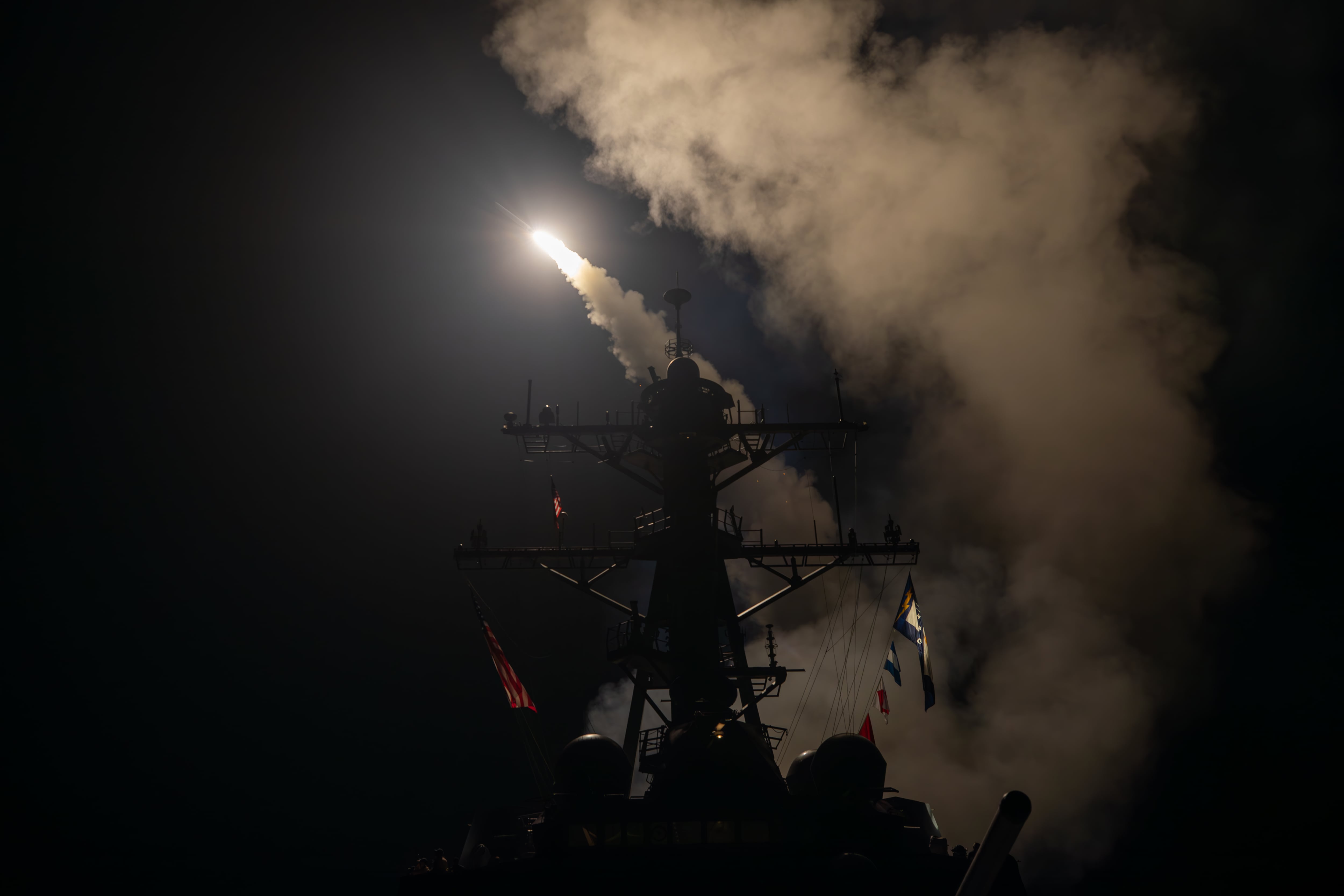The Navy kept up its operations to counter Iran-backed Houthi militants in the Middle East in May, largely engaging with missiles and aerial weapons as a spate of American drones reportedly went down in the region.
Go here for Navy Times’ up-to-date tracker of incidents between the Navy and the Houthis.
As the month came to an end, U.S. officials told The Associated Press that American and British forces struck 13 Houthi targets in Yemen on Thursday in response to a recent surge in attacks by the militia against ships in the Red Sea and the neighboring Gulf of Aden.
RELATED

According to the officials, American and British fighter jets and U.S. ships hit a wide range of underground facilities, missile launchers, command and control sites, a Houthi vessel and other facilities. The officials spoke on condition of anonymity to provide early details of an ongoing military operation.
Also struck by the U.S. were eight air drones in Houthi-controlled areas of Yemen and over the Red Sea that were determined to be presenting a threat to American and coalition forces.
While the Navy reportedly engaged with fewer assets launched by the Yemen-based group in May than in some earlier months of the conflict, the sea service continues to be occupied by nearly daily interactions with the rebel organization, which kicked off its campaign of assaults in the fall after the war between Israel and Hamas began.
As of publishing time, U.S. and coalition forces destroyed, or tracked the firing, or the intent to launch, of at least 15 Houthi anti-ship ballistic missiles, 38 air drones, a land attack cruise missile and two missile launchers in May that the Houthis launched or were prepared to use, according to a tally of incidents announced by U.S. Central Command, as well as reporting by Military Times and The Associated Press.
That all comes as at least three U.S. MQ-9 Reaper drones were purportedly downed in May alone, according to The Associated Press. While not immediately clear what brought down the drones, the outlet reported that U.S. Central Command, which oversees military operations in the region, acknowledged seeing “reports” of the most recent incident.
Meanwhile, the Navy destroyer Carney returned home after a lengthy deployment to the Middle Eastern waters, where the warship fended off, or participated in, at least a dozen incidents with the Houthis.
Jean-Loup Samaan, a nonresident senior fellow with the Atlantic Council, wrote recently that a key challenge for the White House in responding to the continued Houthi threat against international shipping in the Red Sea has been rallying its allies and partners. That in part reflects concerns from Europeans over strategic objectives with the U.S. operation, he said, as well frustration from Gulf countries over the conflict in Yemen, which predated the current circumstances in the Red Sea and the Gulf of Aden.
“The U.S. supports peace in Yemen, but a peace agreement can only proceed after the Houthis stop their reckless attacks on international shipping in the Red Sea and surrounding waterways,” State Department deputy spokesperson Vedant Patel said during a briefing in May.
“All of our partners are united around the need for Houthi attacks to cease before an agreement can be signed,” he said.
Jonathan is a staff writer and editor of the Early Bird Brief newsletter for Military Times. Follow him on Twitter @lehrfeld_media





